I’ll never forget the first time a six-word story made me cry. It was Hemingway’s “For sale: baby shoes, never worn,” and I was sitting in a coffee shop when it hit me like a truck. How could something so short pack such an emotional punch?
That moment changed everything for me. I started collecting short love stories like other people collect vintage records or houseplants. What I discovered blew my mind: these tiny stories don’t waste time on lengthy courtships or elaborate meet-cutes. Instead, they capture those pivotal moments when everything changes – a glance across a crowded room, a text message that arrives too late, or the silence between two people who’ve loved each other for decades.
According to Janice Hardy’s writing blog, the key challenge is fitting meaningful relationship development into limited space – something I learned firsthand when I tried writing my entire relationship history through grocery lists. What seemed impossible became magical when I realized these constraints force writers to get straight to the heart of things.
Whether you’re looking for inspiration for your own writing or just want to experience love stories that’ll stick with you long after you’ve finished reading, this collection spans everything from traditional masterpieces to cutting-edge digital formats. Each story shows different ways to hit you right in the feelings within strict word limits.
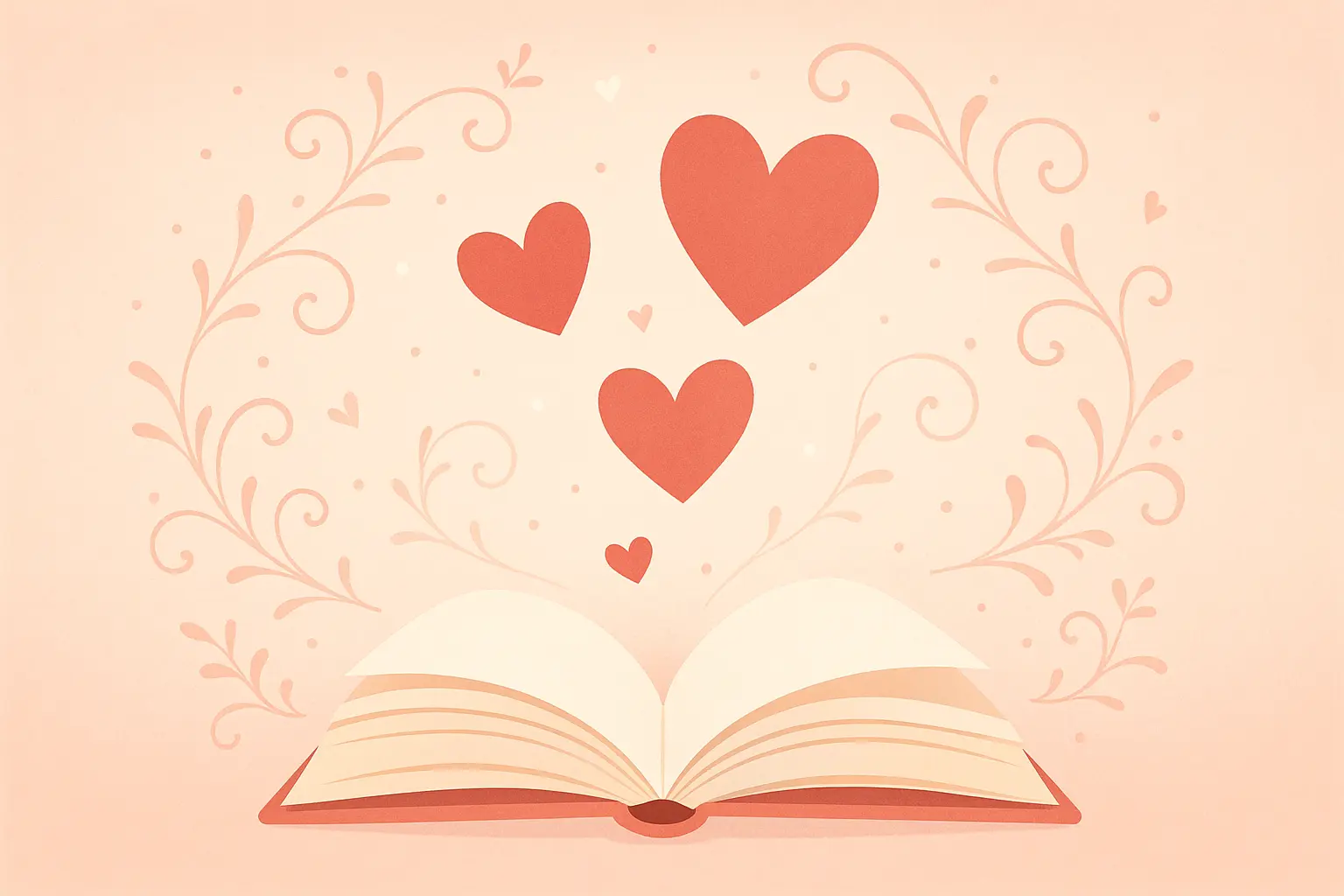
Table of Contents
-
Flash Fiction Masterpieces
-
Contemporary Digital Romance Stories
-
Experimental Structure Love Stories
-
Genre-Fusion Romance Tales
-
Cultural and Diverse Perspective Stories
-
Innovative Format Love Stories
-
How to Choose the Right Short Love Story for You
-
Writing Techniques That Make Short Love Stories Unforgettable
-
Why Short Love Stories Hit Different Than Novels
TL;DR
-
Short love stories hit you harder by cutting straight to the emotional core without any fluff
-
Flash fiction masterpieces prove that sometimes six words can destroy you more than 600 pages
-
Contemporary digital formats (think Instagram stories, dating app chats, email threads) capture how we actually fall in love now
-
Experimental structures mess with your head while keeping your heart fully engaged
-
Genre-fusion stories mix romance with sci-fi, horror, mystery, and fantasy for wild reading experiences
-
Cultural diversity in short love stories gives you authentic windows into different relationship experiences
-
Interactive and visual-text hybrid formats are basically the future of storytelling
-
The best short love stories often start with people who already know each other (no time for lengthy introductions)
-
Every single word has to work overtime – advancing plot, showing character, and building that emotional connection
-
These stories stick with you way longer than most novels because they leave space for your own experiences to fill the gaps
Flash Fiction Masterpieces
1. “For Sale: Baby Shoes, Never Worn” by Ernest Hemingway
Okay, let’s talk about the story that probably made you question everything you thought you knew about storytelling. Six words. That’s it. And yet, I guarantee you’re already feeling something just reading the title again.
Hemingway wasn’t showing off here – he was proving a point. Sometimes the most devastating stories are the ones that don’t tell you everything. Your brain fills in the blanks, and that’s where the magic (and the heartbreak) happens.
What gets me every time is how those unused baby shoes become this symbol of everything that could have been. The couple probably picked them out together, maybe argued about the color, definitely imagined tiny feet wearing them. Now they’re just… sitting there.
This technique works in our digital age too. Think about it: “Last seen online 3 years ago” tells an entire heartbreaking story in just six words. We’ve all been there – checking someone’s profile, seeing that timestamp, and feeling our stomach drop. The dating app context immediately establishes the relationship’s nature, while the time gap suggests abandonment, loss, or worse. It’s the modern version of Hemingway’s devastating efficiency.
2. “The Story of an Hour” by Kate Chopin
If you’ve ever felt trapped in a relationship but couldn’t admit it (even to yourself), this story is going to hit different. Chopin wrote this in 1894, but honestly? It could have been written yesterday.
Louise gets the news that her husband died in a train accident. She goes to her room to grieve, and then… well, let’s just say her reaction isn’t what anyone expects. Including herself.
The genius here is that Chopin gives us one hour of real time to watch someone’s entire worldview shift. No flashbacks, no lengthy backstory – just pure, raw realization happening in the moment. It’s like watching someone finally admit something they’ve been hiding from themselves for years.
And that ending? I won’t spoil it, but prepare yourself. It’s the kind of twist that makes you immediately want to read the whole thing again.
3. “A Temporary Matter” by Jhumpa Lahiri
Power outages as a metaphor for a relationship going dark? Chef’s kiss. Lahiri takes something as mundane as rolling blackouts and turns them into the most emotionally devastating dinner conversations you’ll ever read.
This couple starts playing this “game” where they share secrets in the dark. Sounds sweet, right? Wrong. Each night gets more intense, more revealing, more uncomfortable. It’s like watching a slow-motion car crash, except the car crash is a marriage.
What absolutely destroys me about this story is how it captures that thing couples do – you know, when you’re both pretending everything’s fine while your relationship is literally falling apart around you. The cultural details (the Bengali-American experience, the food, the family expectations) aren’t explained because they don’t need to be. You get it through context, which makes everything feel more authentic.
Fair warning: the ending will mess you up. In the best possible way. It’s a masterclass in how effective short stories can achieve novel-level emotional complexity through precise narrative construction.
4. “What We Talk About When We Talk About Love” by Raymond Carver
Ever been at a dinner party where the conversation gets way too real, way too fast? That’s this entire story. Two couples, some drinks, and a question that seems simple: What is love, really?
Carver was a master at writing dialogue that sounds exactly like how people actually talk – with all the awkward pauses, the interruptions, the things we start to say but don’t finish. These four people are trying to figure out love while probably being a little too honest about their own relationships.
It’s the kind of story that makes you want to immediately call your friends and ask them the same question. Just maybe warn them first that it might get intense.
5. “Hills Like White Elephants” by Ernest Hemingway
Hemingway again, because the man knew how to write subtext like nobody’s business. This couple is having a conversation at a train station about drinks and scenery, but they’re really talking about something completely different. Something life-changing that they can’t quite bring themselves to say out loud.
The “white elephants” in the title? That’s the thing they’re not talking about – the unwanted situation that’s hanging over everything. The train station setting is perfect because they’re literally at a crossroads, and the trains represent the different directions their lives could go.
What makes this story brilliant is that Hemingway never tells you what the central conflict is, but you know. You absolutely know. And that makes it hit so much harder than if he’d just spelled it out.
|
Flash Fiction Technique |
Word Count Range |
Emotional Impact Method |
Best Used For |
|---|---|---|---|
|
Six-Word Stories |
6 words |
Implication and absence |
Universal experiences |
|
Micro-Fiction |
50-300 words |
Single moment intensity |
Pivotal relationship events |
|
Flash Fiction |
300-1000 words |
Compressed character development |
Complete emotional arcs |
|
Short-Short Stories |
1000-2000 words |
Focused conflict resolution |
Relationship turning points |
Contemporary Digital Romance Stories
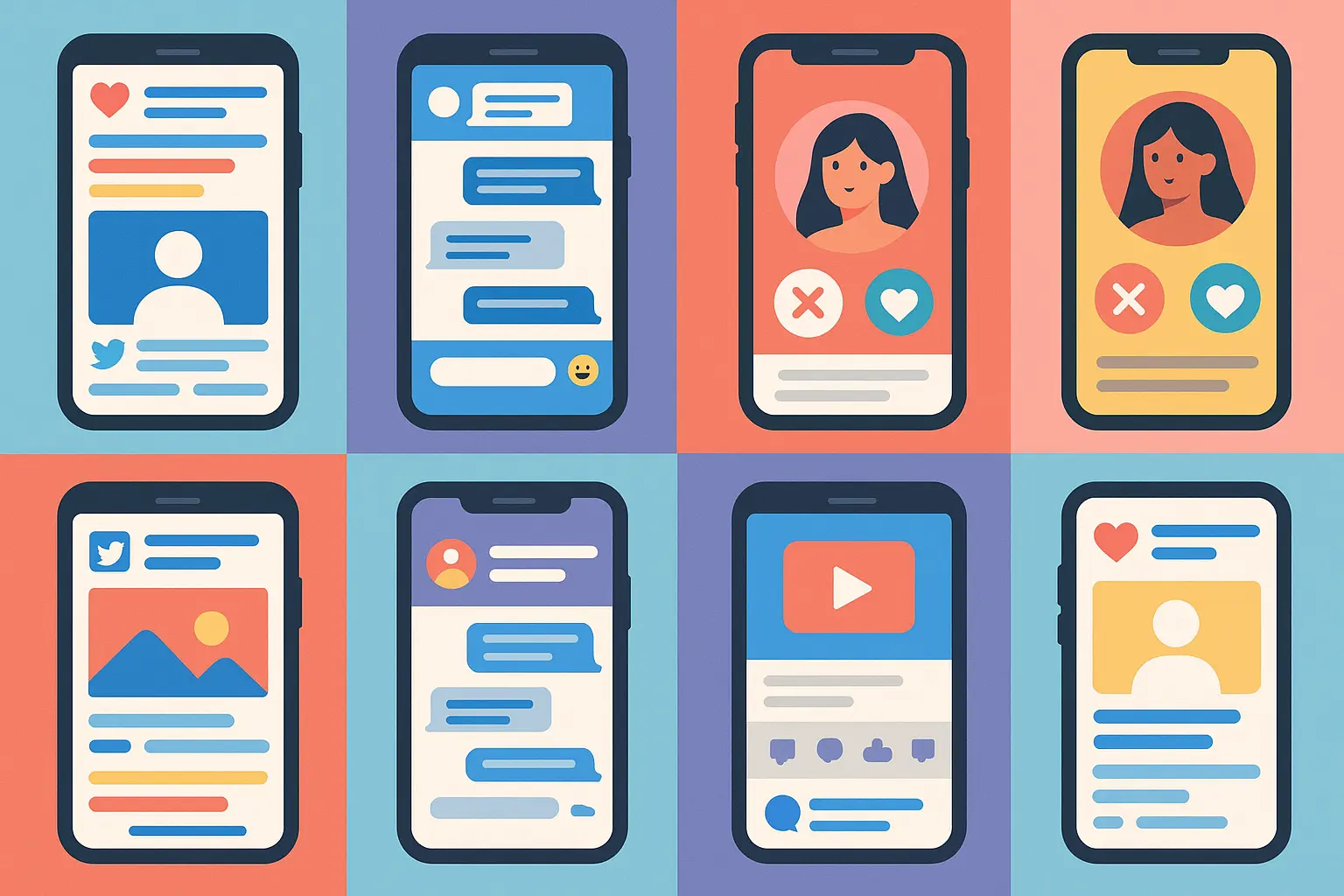
6. Social Media Love Stories
Let’s be real – this is how people actually fall in love now. Through carefully curated Instagram posts, late-night Twitter DMs, and those Instagram stories that disappear after 24 hours but somehow live in your heart forever.
These stories get contemporary romance right because they use the platforms we’re already obsessed with. That Instagram story sequence showing someone’s relationship through coffee cups and sunset photos? You’ve probably posted something similar. The authenticity hits different when you recognize your own digital habits in the story.
Twitter thread romances are particularly genius because they use the character limit to create natural cliffhangers. Plus, the replies and retweets become part of the story – it’s like the whole internet is invested in whether these two people get together.
7. Dating App Narratives
If you’ve ever spent three hours crafting the perfect dating profile only to get matched with someone whose idea of a conversation starter is “hey,” these stories are for you. They capture all the weird, wonderful, terrible parts of trying to find love through an algorithm.
The best dating app stories show the gap between who we are online and who we are in real life. Like the guy whose profile screams “adventure seeker” but he’s actually terrified of leaving his apartment, or the woman who says she’s “looking for something casual” but really wants someone to adopt a dog with.
Profile descriptions become character studies in miniature, revealing hopes, insecurities, and deal-breakers in condensed form. Chat conversations capture the awkward dance of digital flirtation, where emoji choices and read receipts carry serious emotional weight.
8. Email Romance
Corporate email romance is a special kind of torture, and these stories capture it perfectly. The slow burn of professional emails gradually becoming more personal, the panic when you almost send something inappropriate to the wrong person, the way email signatures become opportunities for subtle flirtation.
“Reply All” disasters become relationship-defining moments. Spam filters separate star-crossed lovers. The delay between sending and receiving creates space for overthinking that instant messaging just can’t match.
There’s something beautifully old-fashioned about email romance in our age of instant everything. It forces patience and thoughtfulness in a way that feels almost revolutionary.
9. Pandemic Love Stories
2020 gave us a whole new category of impossible love stories. Virtual dates where half the conversation is “Can you hear me now?” Couples quarantined together speedrunning relationship milestones. People falling in love through windows because that’s literally the only safe way to see each other.
These stories capture something universal about how crisis either brings people together or shows you exactly why you shouldn’t be together. The creativity people showed during lockdown – drive-by birthday parties, synchronized Netflix watching, elaborate video call setups – becomes the backdrop for surprisingly touching love stories.
Video call transcripts reveal how couples maintained intimacy through screens, with technical difficulties and background interruptions becoming part of the romantic narrative. The forced creativity creates rich story material that couldn’t exist in any other era.
10. Gaming Romance
Don’t sleep on gaming romance stories. There’s something incredibly intimate about spending hours building something together in a virtual world, whether it’s a Minecraft castle or a guild in an MMORPG.
These stories explore how people can fall in love with someone’s mind and personality before ever seeing their face. The collaborative nature of gaming creates natural bonding opportunities, and the fantasy settings let people express themselves in ways they might not in real life.
The tension between online and offline identity provides endless story possibilities. Maybe they’re more confident as their avatar, or maybe their real-life shyness disappears when they’re leading a raid. It’s modern romance with a twist.
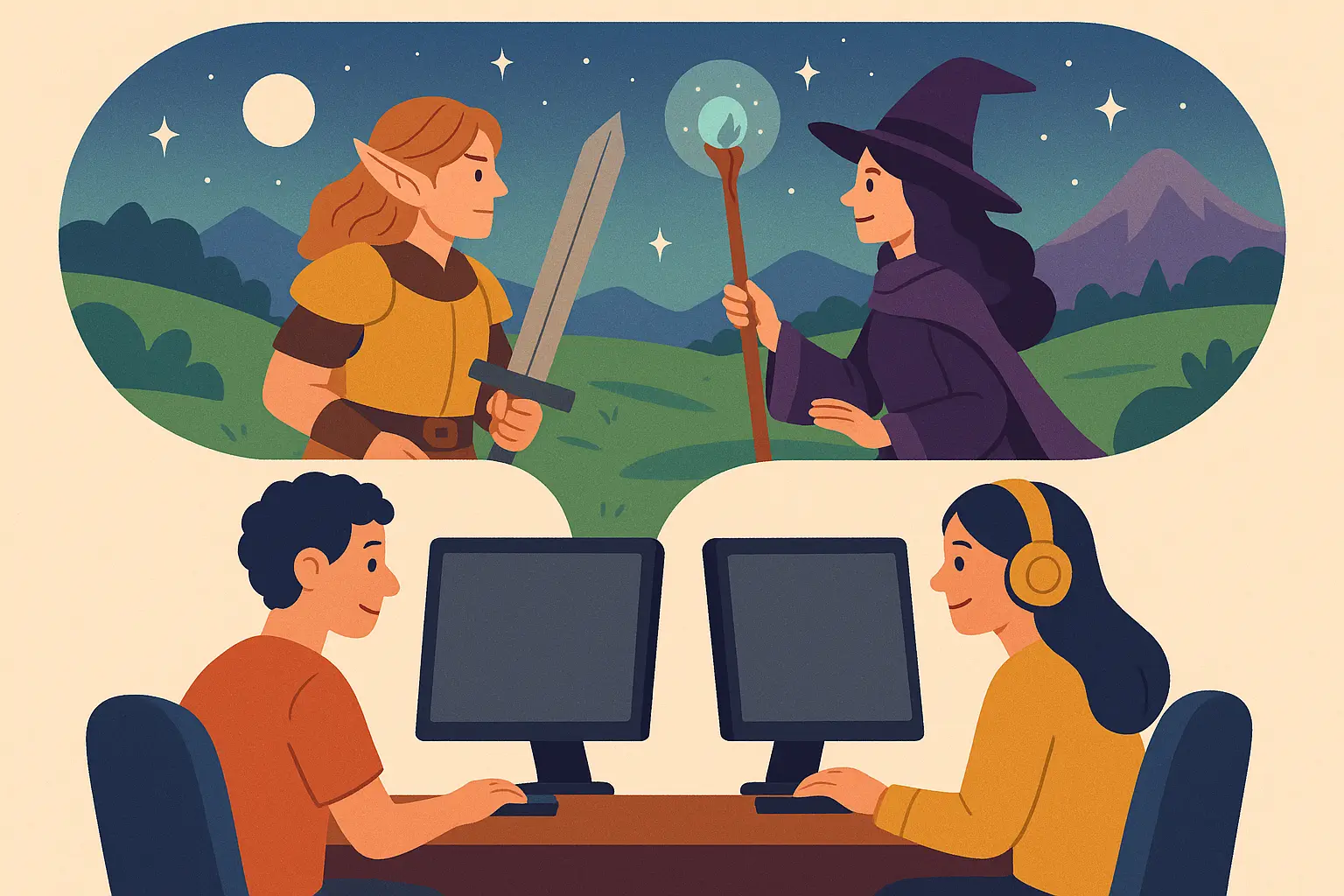
Experimental Structure Love Stories
11. List-Based Love Stories
Lists are weirdly intimate, aren’t they? “Things I Want to Tell You But Never Will” or “Reasons I Keep Your Number in My Phone” – these formats let writers sneak up on your emotions through the back door.
The genius of list-based stories is that they feel organized and controlled, but they’re actually chaos barely contained. Each item builds emotional weight, and by the time you get to item #47, you’re completely destroyed.
I once read a love story told entirely through a grocery list, and it was devastating. “Milk (the kind you like, even though it’s more expensive)” tells you everything about that relationship in one line.
12. Fragmented Timeline Stories
These stories jump around in time because that’s actually how memory works. You don’t remember your relationship as a linear narrative – you remember moments. The first kiss. The fight about nothing that turned into everything. The way they looked sleeping on a Tuesday morning.
“Before/During/After” structures show how the same person can be completely different across time. The fragments let you fill in the gaps with your own experience, which makes the story feel personally crafted for you.
The white space between sections becomes as important as the text itself. You actively participate in constructing the complete story, making personal connections that create lasting engagement.
13. Second-Person Narratives
“You remember the first time you saw them” – boom, you’re not reading about someone else’s love story anymore. You’re living it. Second person is risky because it can feel gimmicky, but when it works, it’s magic.
The best second-person love stories tap into universal experiences. We’ve all had that moment of seeing someone across a crowded room, or getting a text that changes everything, or lying awake at 3 AM wondering “what if.”
The challenge is finding that sweet spot where you can project your own experiences while still following a coherent narrative path.
14. Parallel Structure Stories
“His side/Her side” stories are fascinating because they show how two people can experience the exact same moment completely differently. What feels like rejection to one person might be shyness to the other. What seems like lack of interest might actually be respect for boundaries.
These stories make you realize how much of relationship drama comes from simple miscommunication and assumptions. They’re like relationship therapy in story form.
Dual narratives create rich opportunities for dramatic irony – you gain complete understanding while characters remain limited by their individual viewpoints, creating both empathy and frustration.
15. Circular Narratives
Stories that end where they began are satisfying in a way that’s hard to explain. The same line that opens the story takes on completely different meaning after you’ve been through the whole journey.
“She always ordered coffee black” might seem like a simple preference at the beginning, but after learning about her ex-husband’s obsession with cream, it becomes a statement of independence. The circular structure makes every word work double duty.
This technique mirrors how real understanding develops – we often don’t grasp the significance of moments until we have broader context. The circular structure recreates this experience of dawning comprehension.
|
Experimental Structure |
Emotional Effect |
Reader Participation Level |
Best For |
|---|---|---|---|
|
List-Based |
Accumulative intensity |
High interpretation |
Hidden emotions |
|
Fragmented Timeline |
Memory authenticity |
Gap-filling engagement |
Long relationships |
|
Second-Person |
Immediate intimacy |
Personal projection |
Universal experiences |
|
Parallel Perspectives |
Complete understanding |
Comparative analysis |
Miscommunication |
|
Circular Narrative |
Transformed meaning |
Re-interpretation |
Character growth |
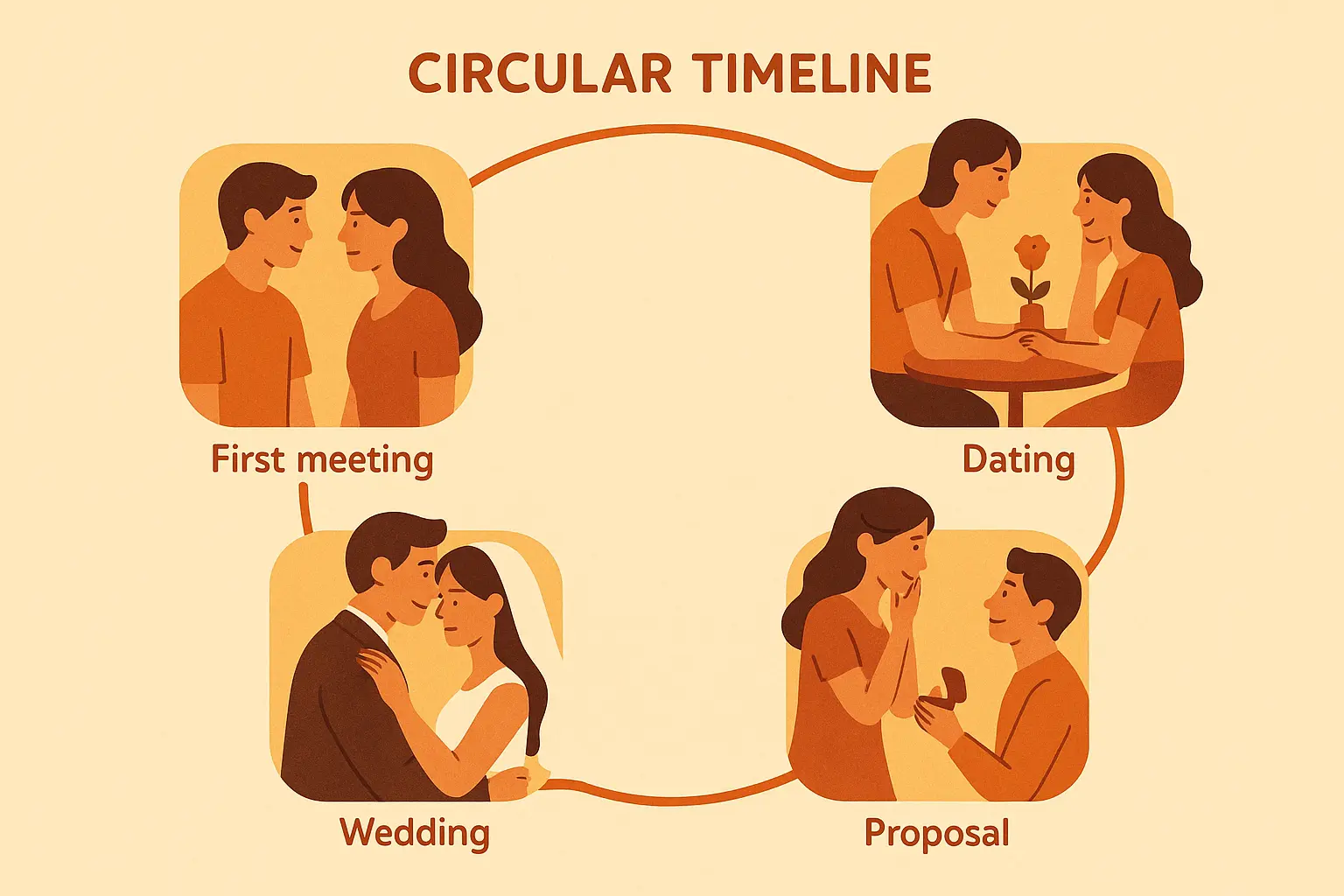
Genre-Fusion Romance Tales
16. Sci-Fi Romance Flash Fiction
Time travel love stories are the ultimate long-distance relationship nightmare. Imagine falling for someone who’s from the wrong century, or loving someone you can only see in alternate dimensions. The sci-fi elements let writers explore impossible scenarios that somehow reveal universal truths about love.
A time-traveler falling for someone in the wrong era faces ultimate long-distance relationship challenges. The science fiction premise allows exploration of themes like destiny, sacrifice, and the lengths people will go for love without requiring realistic explanations for extraordinary circumstances.
The key is using the fantastical elements to enhance the emotion, not overshadow it. The best sci-fi romance stories use time machines and parallel universes as metaphors for the real obstacles all couples face.
17. Horror-Romance Hybrids
Nothing says “I love you” like “I’ll fight monsters with you.” Horror-romance stories work because external threats strip away all the social pretenses and force people to rely on each other completely.
When you’re fighting for your lives together, you learn pretty quickly whether this person is worth keeping around. The life-or-death stakes accelerate relationship development in a way that feels natural rather than forced.
The contrast between horror and romance creates unique emotional texture. Moments of tenderness become more precious when surrounded by danger, while romantic connection provides refuge from external threats.
18. Mystery-Romance Stories
Solving crimes together is apparently very romantic. Who knew? These stories work because investigation requires communication, trust, and complementary skills – all the building blocks of a good relationship.
Plus, the mystery structure gives you a plot that moves forward while the romance develops naturally alongside it. It’s like getting two stories for the price of one.
The best mystery-romance stories make the investigation personal to the relationship. Maybe they’re solving the mystery of their own past connection, or the crime threatens their future together. This integration ensures both plot elements serve the overall romantic narrative.
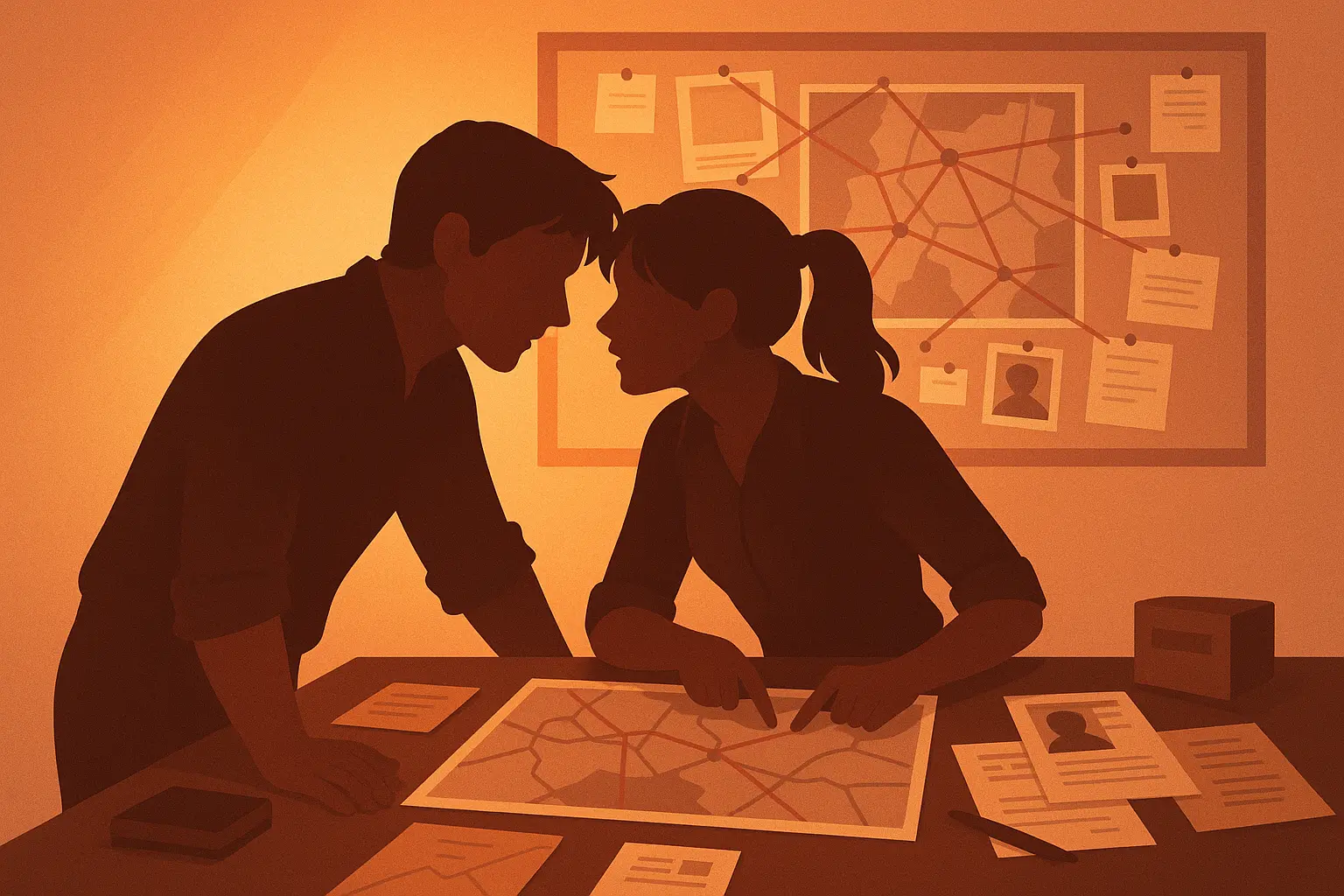
19. Fantasy Romance Microfiction
A woman whose garden blooms only when she’s happy. A man whose shadow shows his true feelings. Fantasy romance uses magic to make internal emotional states visible and immediate.
These stories work because they take metaphors literally. Instead of saying “love makes everything bloom,” you show a literal garden responding to someone’s emotional state. It’s poetry disguised as prose.
The key is using fantasy elements that enhance rather than distract from romantic content. The best fantasy romance stories use magic to illuminate universal truths about love, connection, and human nature rather than simply adding supernatural decoration to conventional romance plots.
20. Dystopian Love Stories
When the world is ending, love becomes an act of rebellion. Dystopian settings make romance more precious because it’s literally forbidden or dangerous.
These stories externalize all the obstacles that real relationships face – family disapproval, societal pressure, competing loyalties – and make them literal threats. It’s like regular relationship drama, but with actual stakes.
Forbidden relationships in totalitarian settings carry life-or-death stakes that naturally intensify emotional connection. Secret meetings, coded messages, and stolen moments become charged with significance that peaceful societies cannot match.
Cultural and Diverse Perspective Stories
21. Cross-Cultural Romance
Language barriers can be romantic obstacles or opportunities for creative communication. Food becomes love language. Family expectations clash with personal desires. These stories celebrate diversity while honestly addressing real challenges.
The best cross-cultural romance stories avoid stereotypes by focusing on specific, authentic details. They show how differences can be sources of discovery rather than just problems to solve.
Immigration experiences provide rich story material, with romantic relationships serving as bridges between old and new worlds. Food, language, traditions, and family expectations become both sources of connection and potential conflict, creating natural story tension without relying on artificial obstacles.
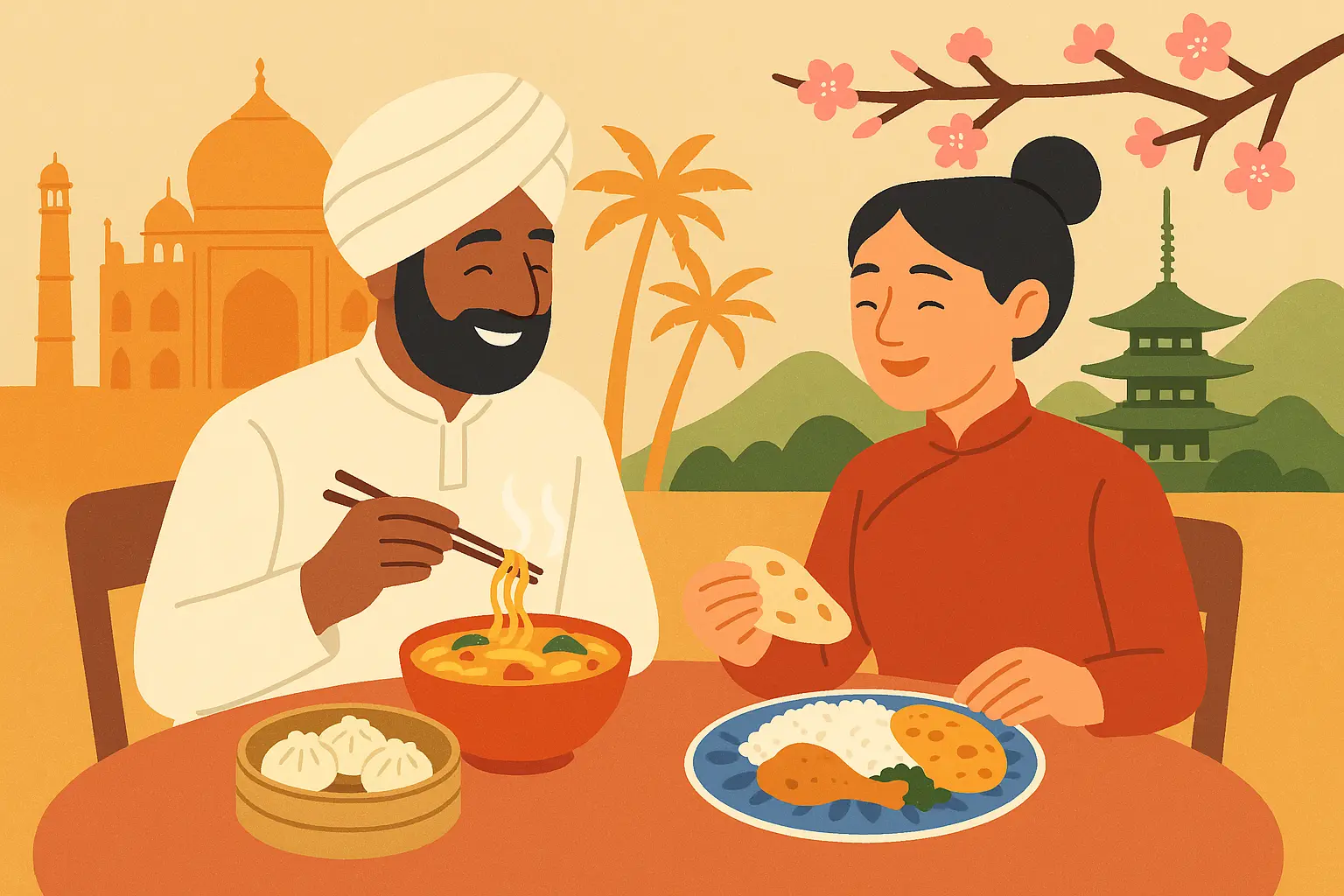
22. LGBTQ+ Love Stories
These stories capture the unique experience of falling in love while also figuring out who you are. The intersection of identity and attraction creates natural story tension, while the courage required for authenticity provides inspiring character development.
Coming out stories compressed into single moments can be incredibly powerful. The best LGBTQ+ love stories provide representation without tokenism, focusing on complete human beings whose identity is part of their whole story, not their entire story.
Identity exploration through romantic connection creates powerful narratives that combine personal growth with relationship development. These stories capture unique experiences while focusing on universal themes of love, acceptance, and authentic self-expression.
23. Intergenerational Romance
Age gap relationships challenge assumptions about compatibility and appropriate partnerships. These stories explore how different life stages and perspectives can complement rather than clash.
A 28-year-old teaching her 65-year-old partner social media while he introduces her to vinyl records shows how generational differences can enrich connection rather than divide it.
Young person caring for elderly partner stories can explore themes of mortality, legacy, and the different ways people express love across life stages. The time compression inherent in these relationships – where one partner faces limited time – creates natural urgency and emotional intensity.
Innovative Format Love Stories
24. Visual-Text Hybrid Stories
A photo with a caption that completely changes its meaning. A couple laughing in the image, but the caption reveals it was taken moments before their breakup. These stories push the boundaries of traditional fiction by making visual and textual elements essential to each other.
Single images combined with minimal text create complete narratives where visual and textual elements are incomplete without each other. These stories push the boundaries of traditional fiction by incorporating visual storytelling techniques while maintaining focus on romantic themes.
These hybrid formats work particularly well for social media distribution and appeal to readers comfortable with multimedia content. They represent the future of storytelling in digital environments where text and images naturally combine to create meaning.
25. Interactive Love Stories
Choose-your-own-adventure romance lets you determine the outcome. Different choices lead to different endings, showing how small decisions shape relationship trajectories.
Multiple endings let you explore various possibilities without committing to one outcome. It’s like getting to live several versions of the same love story.
Reader decisions about how characters respond to conflict, express affection, or handle challenges lead to different endings, showing how small choices shape relationship trajectories. The interactive format makes readers invested in outcomes while exploring the complexity of romantic decision-making.
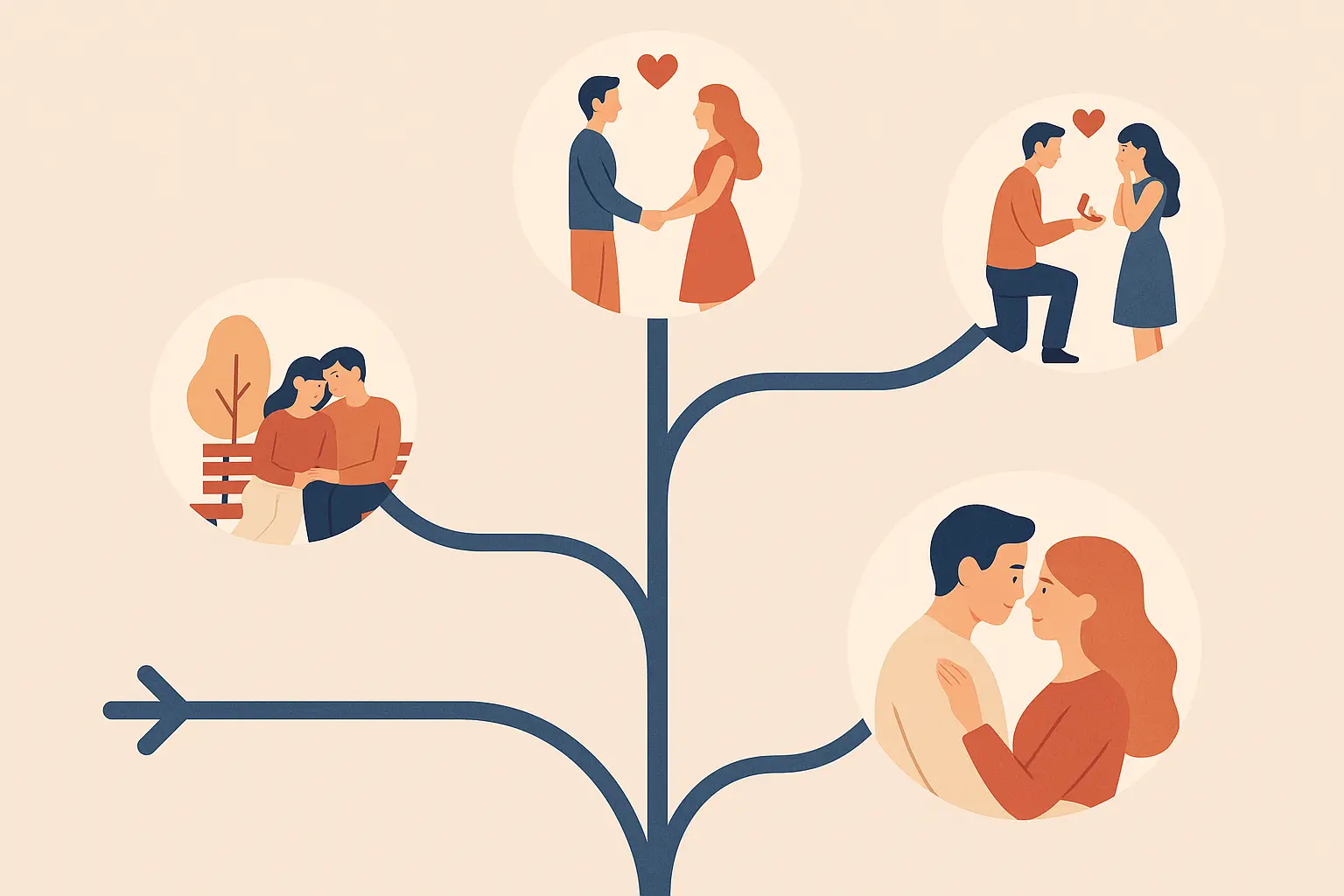
How to Choose the Right Short Love Story for You
If you’re new to romance, start with the straightforward ones (stories 2, 7, 8). If you love literary fiction, go for the masterpieces (stories 1, 3, 4, 5). If you want something completely different, try the experimental stuff (stories 11-25).
Think about what you want from a story. Clear resolution? Start with the contemporary digital ones. Emotional complexity? Try the literary classics. Mind-bending creativity? Go experimental.
New romance readers should start with stories offering clear narrative progression and satisfying emotional resolution. These provide familiar romantic beats and accessible entry points into short fiction without requiring extensive literary background or comfort with ambiguous endings.
Literary fiction enthusiasts will appreciate sophisticated language use and complex emotional landscapes found in flash fiction masterpieces. These stories reward careful reading and re-reading while providing the intellectual satisfaction that literary readers seek.
Innovation seekers should explore experimental structure stories and innovative formats for boundary-pushing approaches that challenge conventional romantic storytelling while maintaining emotional authenticity and reader engagement.
|
Reader Type |
Recommended Stories |
Key Features |
Avoid If You Prefer |
|---|---|---|---|
|
Romance Newcomers |
Stories 2, 7, 8, 21 |
Clear progression, satisfying endings |
Experimental structures |
|
Literary Fiction Fans |
Stories 1, 3, 4, 5 |
Complex language, ambiguous endings |
Simple narratives |
|
Innovation Seekers |
Stories 11-20, 24-25 |
Experimental formats, boundary-pushing |
Traditional structures |
|
Genre Fusion Lovers |
Stories 16-20 |
Multiple genre elements, unique premises |
Pure romance focus |
|
Cultural Diversity Seekers |
Stories 21-23 |
Authentic representation, varied perspectives |
Homogeneous experiences |
Writing Techniques That Make Short Love Stories Unforgettable
Every word has to work overtime in short fiction. Writers can’t waste time on lengthy introductions, so they often start with characters who already know each other. This lets them focus on relationship development rather than setup.
The best short love stories leave gaps for you to fill with your own experience. They give you just enough information to follow the story but let your imagination do the heavy lifting.
Every word must serve multiple narrative functions – advancing plot, revealing character, and building emotional connection simultaneously. This efficiency requirement forces writers to choose precise language that carries maximum meaning, creating dense, rich prose that rewards careful attention. Writers exploring these techniques can benefit from understanding story themes that transform writing, which provides essential frameworks for developing meaningful romantic narratives.
Starting with characters who already know each other saves valuable word count that would otherwise be spent on introductions and initial attraction. This technique allows writers to focus on relationship development and conflict resolution rather than setup, creating more satisfying story arcs within limited space.
Emotional compression through strategic omission lets readers fill gaps with their own experiences, creating personalized connections that extend beyond the written text. The best short love stories leave space for reader participation while providing enough guidance to maintain narrative coherence.
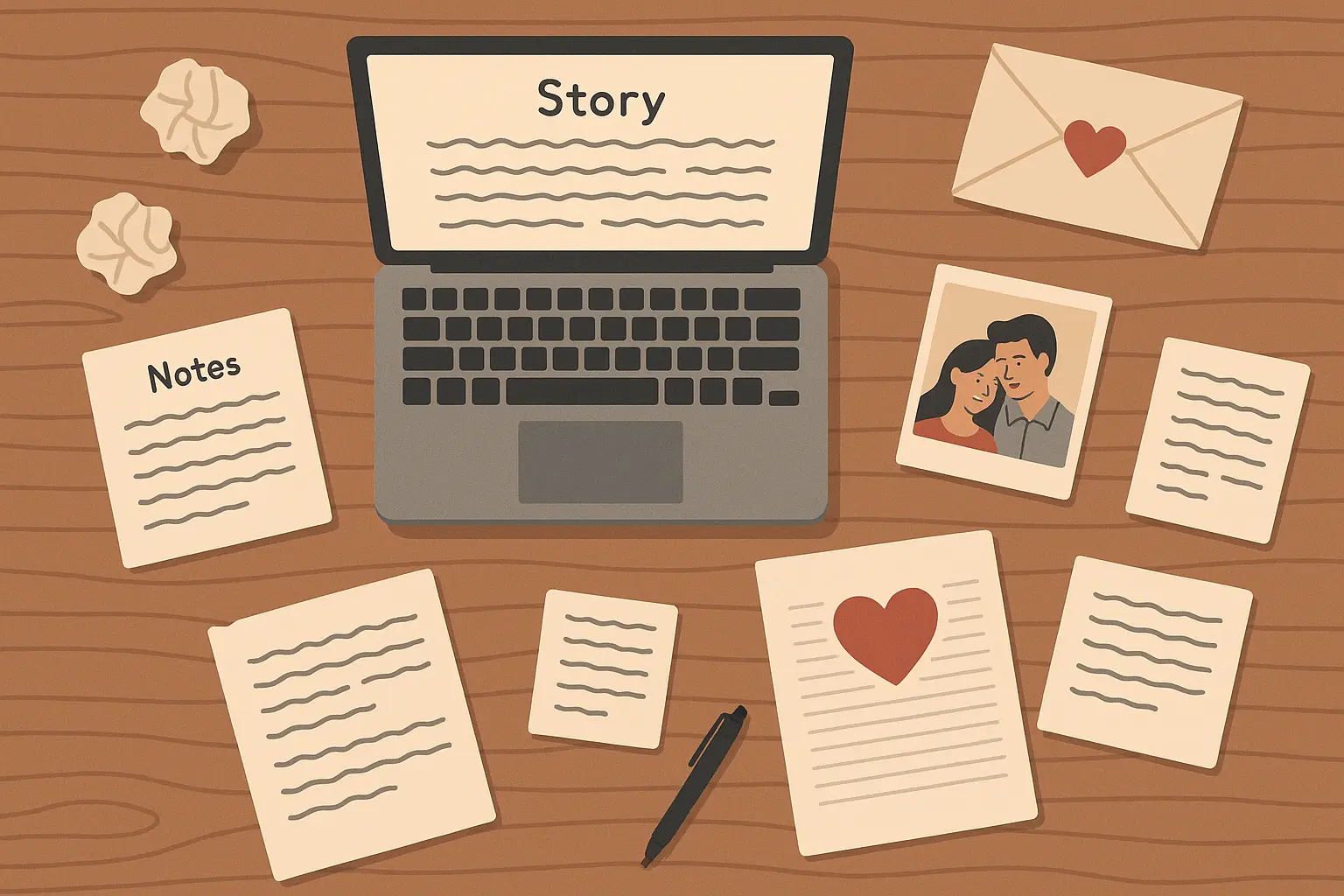
Why Short Love Stories Hit Different Than Novels
Short love stories distill romance to its essence. They capture those pivotal moments – the glance, the text, the silence that says everything – without all the filler that longer formats sometimes need.
They’re also more memorable. A perfect six-word story can haunt you for years, while a 400-page novel might fade from memory in months. There’s something about brevity that makes stories stick.
The constraints force creativity. When you only have 1,000 words to make someone cry, you better make every single one count.
Time compression forces focus on pivotal relationship moments rather than gradual development, creating stories that capture the intensity of falling in love, experiencing heartbreak, or recognizing deep connection. These concentrated experiences often feel more emotionally authentic than extended narratives.
Reader participation becomes essential when stories leave gaps for imagination to fill. This active engagement creates personal investment and lasting memory formation that passive reading cannot match. Short love stories become collaborative experiences between writer and reader, much like the techniques explored in our analysis of transformative storytelling examples that demonstrate how brevity can amplify emotional impact.
The memorable nature of brief, well-crafted stories means they stay with readers longer than longer works that might be forgotten despite greater time investment. A perfect six-word story can haunt readers for years, while a 300-page novel might fade from memory within months.
Writing compelling short love stories requires mastering the delicate balance between precision and emotional resonance. Nairrate’s AI love story generator becomes an invaluable creative partner for writers exploring romantic short fiction, helping overcome common challenges such as crafting perfect opening lines, optimizing language density, and finding precise sensory details that compress entire relationship dynamics into powerful moments.
The tool excels at generating authentic dialogue for digital format stories, exploring experimental structures while maintaining emotional coherence, and providing multiple options for crucial story elements. Rather than replacing your unique voice, Nairrate functions as a brainstorming partner that helps break through creative blocks and discover new possibilities for romantic storytelling.
Final Thoughts
Short love stories prove that constraints breed creativity, forcing writers to get straight to the heart of what makes us human while creating reading experiences that novels simply cannot replicate. These 25 examples show the incredible range possible within brief formats, from six-word masterpieces to innovative digital narratives that reflect how modern relationships actually develop.
The evolution from traditional literary forms to contemporary digital expressions shows how love stories adapt to new technologies and cultural contexts while maintaining their essential emotional core. Whether you prefer Hemingway’s brutal efficiency or interactive multimedia experiences, there’s a short love story format that will resonate with your preferences and reading habits.
The beauty of short love stories lies in their ability to capture those pivotal moments when everything changes – the glance, the text, the silence that speaks volumes. They remind us that love’s most powerful expressions often come in small packages, concentrated doses of emotion that stay with us long after longer narratives fade from memory.



Add comment